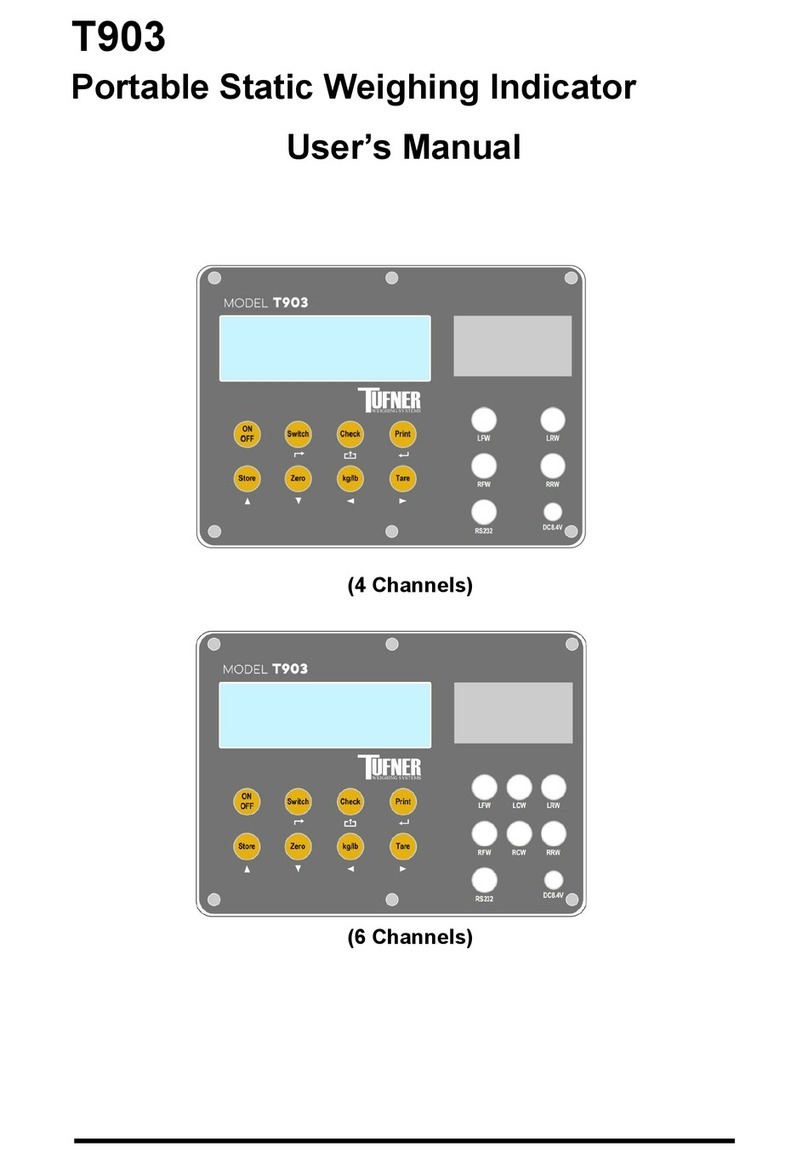
Calibration Menu
].
1. Turn on the scale by holding ON/OFF for 2 seconds.
2. Press HOLD and PRINT together to access the setup menu.
3. If done correctly, the display should now show C01.
4. Press PRINT to access the C1 channel. The display should show
5. Press ZERO to choose which unit you want to calibrate in (1 = kg, 2 = lb).
6. Press PRINT to set the value. The display will now show C02.
7. Press PRINT to access the C2 channel. The display should show
8. Press ZERO
to change the setting to the decimal places desired (The C2 channel is
used to adjust the decimal point on the scale. A value of 1 means there is one digit
behind the decimal point.)
9. Press PRINT to set the value. The display will now show C03.
10. Press PRINT to access the C3 channel. The display should show
11. Press ZERO to cycle through the values until the desired graduation appears.
(The C3 channel adjusts the divisions on the scale. A value of 1 selected and C2 set
to 1, the scale will read in 0.1 lb. increments.)
12. Press PRINT to set the value. The display will now show C04.
13. Press PRINT to access the C4 channel. The display will show
14. Enter in the maximum capacity you want to use for this scale by using UNITS
cursor right, and TARE and ZERO to move the values down and up. (The C4 channel is
to move the
used to enter in the max capacity of the scale; Make sure this doesn’t exceed the max capacity
of the scale; Max capacity divided by the increment set in C02 and C03 above cannot
exceed 5000.)
17. The C5 channel calibrates zero on the scale. Make sure the scale is empty.
18. Press ZERO to change the value to 1.
19. Press PRINT . The display will count down from 10-1 while the scale is calibrating zero.
When the display shows 0 the zero calibration is complete.
The indicator offers 2 calibration methods, Single Point which uses one weight
to calibrate or Linear Calibration, which uses multiple (2-7) weights for a more
accurate calibration.
To Calibrate using only 1 calibration weight (Single Point Calibration)
20. Press PRINT to continue. The display will now show C06.
21. to access the C06 channel. The display will show
22. The C6 channel is used to calibrate the scale with a known weight. Press ZERO
. The display will flash
to
set the value of C6 to C6 1 Press PRINT SPAN , and
then show ######
enter
enter
enter
enter
enter
15. Press PRINT to set the value. The display will now show C05.enter
enter
Press PRINT enter
enter
enter
enter
enter
esc enter
C1 # ].[
C2 # ].[
###### ].[
C3 # ].[
16. Press PRINT to access the C5 channel. The display should showenter C5 # ].[
C6 0
[
].[
].[
- 7 -































